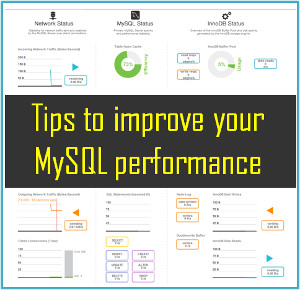Reducing Latency in Colocation Centers
Investment banks and securities firms have used colocation for a long time. At first, they chose independent data centers that were as close to the financial exchanges as possible. The firms assumed that being closer to the securities exchange would help them to execute trades more quickly. Now, the exchanges allow financial firms to colocate their servers inside of the exchanges' own data centers. The idea is that placing servers meters from the exchanges' equipment puts everyone in the data center on a level playing field.
On the financial markets, trades are timed in microseconds. Many trades are executed by computer algorithms, meaning latency between the trading server and the exchange server can have serious financial consequences. While latency can be a concern when using colocation, geographic distance from the destination server isn't the only factor affecting speed. Proximity to major network pipelines, along with latency issues in the data center itself, also have an effect on data transmission speed.
Network Pipeline Proximity
The key fiber-optic cables that form the backbone of the Internet are most often located near the coast of a continent. For example, a West Coast colocation center would have nearly instant pipeline access to Asia, Australia and South America.
A signal can travel on this pipeline from Hong Kong to New York City in a matter of milliseconds. This article from the Daily Mail includes a map of key fiber-optic pipelines all over the world. When signals reach the coast of a country, they enter a landing station. The landing station directs the signals to key hubs, which are located in population centers.
Colocation centers that would give you the least latency may not actually be the data centers that are closest to your company. They're going to be the centers closest to these cables, landing stations and key hubs. Therefore, when choosing your colocation facility, you should select a center located near a major network pipeline.
Latency in the Data Center
Another factor that may be more important than geographic proximity is the latency within your colocation center. Make sure to select a colocation center that measures the end-to-end latency within the facility. Specialized monitoring equipment can capture and then time-stamp messages as they arrive at the colocation center’s edge. This enables you to see latency at the application level as well as network-related latency. To get measurements in the microseconds, choose hardware time-stamping instead of software time-stamping.
Latency in the data center is also affected by the nature of colocation itself. A vendor maintains the center's network infrastructure, but as a client, you maintain your own IT setup. The interaction between the network infrastructure and your third-party equipment may affect latency. As long as you're monitoring latency, you can detect problems related to equipment degradation and other effects. If your colocation center's performance changes over time, then you can relocate your equipment.
Geographic Distance
In the end, physics is physics. When data is traveling from your colocation center to its destination, data tends to take more time to travel to faraway locations. You may be able to defeat physics by using a content delivery network (CDN). A CDN is a network of edge servers stored in key geographic locations. These servers maintain copies of static information. A particular server will transmit information to an end-user based on its proximity to the end-user. Although your colocation center may be in San Diego, for instance, a CDN edge server in New York City could transmit content to a Web user in New Jersey. If CDNs interest you, then consult your colocation provider.
In addition to offering CDNs, colocation providers may offer specialist technologies for your industry that can speed up your workflow. For example, for financial firms, data centers may deploy field programmable gate arrays that can enforce pre-market risks in a matter of nanoseconds. In addition to checking for specialized technologies, check for scalability to ensure your data center can handle traffic spikes based on events or on seasonality.
If you're in an industry where speed is essential to success, then make sure that your speed requirements are spelled out in your service-level agreement (SLA). Finally, make sure that the colocation center has multiple carrier networks available so that your packets can travel along the least congested route.
About the Author: Stan H. Yelvington provides IT consulting for small and medium-sized businesses. For many companies, he recommends using Scalematrix colocation center.

 Janifar
Janifar







